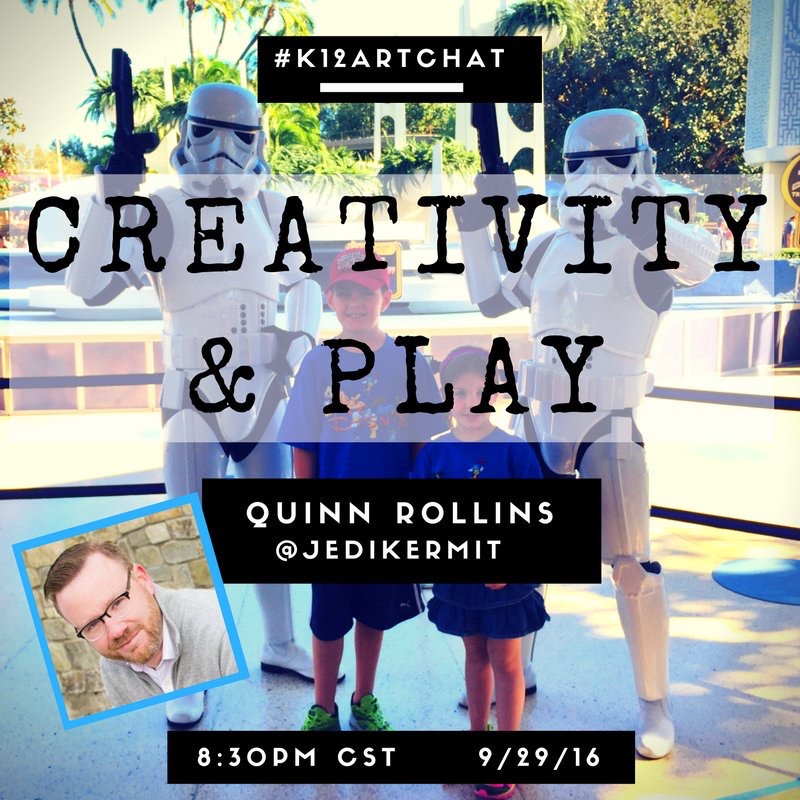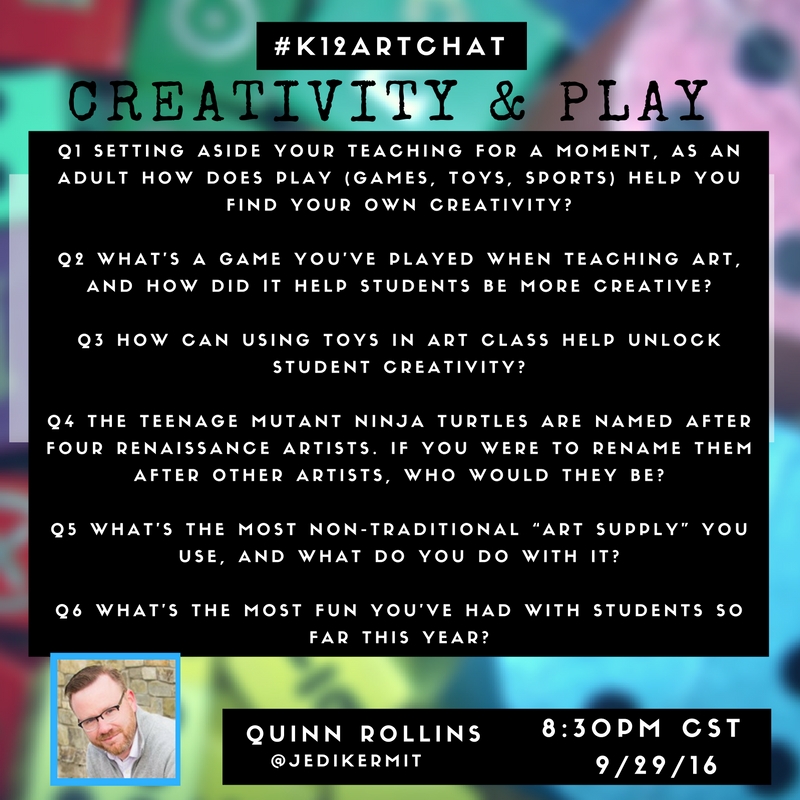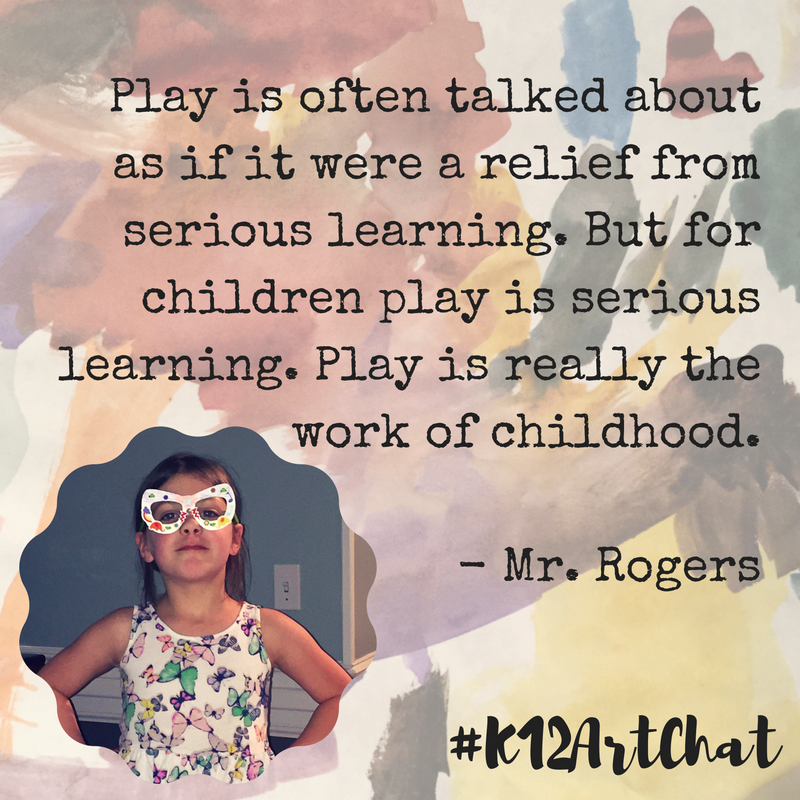Art of Play, Do you “Play” in your classroom?
6 Min Read • Arts Integration
A few months ago we had the opportunity to connect with Quinn Rollins author of Play Like a Pirate and it raised many questions so we thought it would be good to circle back to visit with Quinn again and asks his ideas about Art of Play.

As we chatted I keep thinking about the Picasso quote “Every child is an artist. The problem is how to remain an artist once he grows up.” Growing up means we sometimes forget the importance of play and that art of play is the spark for imagination. We forget the art of play. Imagination and innovation are critical partners, without the ability to see endless possibilities, we can’t create design new solutions to our everyday problems.
The idea of art of play in the classroom is one that needs to be explored more deeply and advocated for as we write and create a new curriculum. So we asked Quinn Rollins a series of questions that occurred to Matt and I as we discussed a fundamental question, Do we “play” in our classrooms?
Quinn, thank you for connecting with the K12ArtChat network and for taking time out to discuss art of play in the classroom. We know you are “Pirate” and love that you draw with your son (in fact Quinn introduced us to #inktober) but we’d love to know more about you.
Why do you teach, what do you teach, how long have you taught, ect.?
I’m a history teacher — I taught 7th and 8th grade for ten years, and then I’ve been a social studies curriculum specialist for the last few years, working in the central office and missing the kids every day. The goal is to get back into the classroom.
What role should play have in the classroom?
Whether structured or unstructured, playlets students take what they’ve been learning and do something better with it. Something more natural to them and how they’re thinking. We spend a lot of time as teachers helping kids learn how to conform. Which isn’t bad. Part of growing up and becoming part of society is conformity. But part of finding joy in life is knowing when you can break out of that box and have fun.
How can we seamlessly integrate art of play into our lesson plans?
For me, play works best as an assessment. Taking the information students have learned, taking the processes or content, and then setting up a situation where they can have some fun with it. It might be as a review before a more formal assessment, or it could take the place of the assessment itself. The “seamless” part can be more tricky–if you’ve never used play as a strategy before, it can fall flat for you or for the students.
Inserting play into a lesson plan doesn’t mean that’s the whole lesson plan or the whole class period; it can just be the hook for the day or a way to playfully disrupt something that you and I both know would otherwise be boring material.
Do you feel that the pressure to perform on standardized tests has hurt the ability to “play” at school?
The format of most standardized tests seems to encourage rote learning. Teachers fall back on that because it’s how they (we, actually) learned so many of the things that are tested. What we miss with that rote memorization is the deeper learning that can take place once those basics are mastered. In “The Sound of Music,” the kids don’t stop learning to sing once they’ve mastered “Do, Re, Mi.” Their teacher takes them through the streets of Salzburg, singing variations of the song using those notes, substituting words for the notes, etc.
If we’re stopping our students once they’ve learned the basics that can be plugged into a multiple choice test, we’re holding them back. Play gives them the room to improvise in a safe environment, exploring the limits of their knowledge and letting them take it further.
Does play to connect to newer curriculum philosophy, such as STEAM (science, technology, engineering, art, and math) or PBL (project based learning), and if so how?
Play very much connects to those philosophies. In my book “Play Like a Pirate,” many of my examples are about the design process that’s a common feature of STEAM and PBL. Instead of a conventional book report, designing a line of action figures based on the book, including the advertising campaign that would be used to promote it. Using LEGO or other building toys to prototype inventions, brainstorm ways to solve community problems, etc.
Matt and I found it very interesting that board games were a hot buy this holiday season any thoughts on why? …… Can you give us a few examples of how to incorporate board games into your lessons/classroom?….
Board games and tabletop card games have seen a resurgence in recent years. Part of it might be nostalgia, but I think part of it is that those games have a set beginning and end. They’re often played in rounds, so if you lost the last round, you’re reset for this round and no further behind the other players. In the classroom, that means that your kids are all on even footing, and whether they’re a kid who does well on traditional assessments or not, they’ll have a chance to see success. I said earlier that I’m a history teacher, and there are dozens (hundreds?) of the history-themed board and card games out there. One of the best end-of-unit assessments I’ve seen is having students create their own board games; set some parameters and then let them create them. Once they’ve set up those games, it’s important to play them, not just evaluate them like you would a display board. Those kids will remember every part of those games long after they’ve forgotten other parts of that unit.
What is your favorite form of play and how do you make it a priority and furthermore is it a priority in your personal life or just the classroom?
I’m a LEGO guy. Not a two-inch-tall plastic dude (but man, if I were…). I love the infinite flexibility that a box of LEGO bricks gives you. I love that everyone can use them. You don’t need special skills, tools, or programs. While I love the FIRST LEGO League, LEGO robotics, and other LEGO Education products, I appreciate that you can have lesson plans on your own without staying within their scripted box. One of the strongest chapters in “Play Like a Pirate” is about LEGO and the many ways you can use it with students. There are always ways to use it in the classroom, no matter what subject you’re teaching, and no matter what age you’re teaching. I’m a fan of the imaginative play and watching kids (or adults) build with LEGO, they’re building beyond what you see in front of them. Ask them about what they’re building and they’ll say “well, you can’t quite see it, but here’s the power source, here’s a bedroom, here’s an alien” — it’s always more creative than you realize as an outside observer.
And yes, LEGO is a priority and obsession in my personal life. The last LEGO Minifigure census included 1,454 different minifigures, of various genders, species, and creeds. So…priority, obsession, and…problem. Delightful problem.
Quinn, thank you for continuing to highlight play for the educational community. We all know that it has a magical role in education as a point of exploration and discovery, and yet it’s often overlooked or underappreciated. Please keep sharing your wonderful ideas and we’d like to encourage the K12 community to pick up a copy of your book for inspiration!
Wishing you Creativity and PLAY!
Matt and Laura





